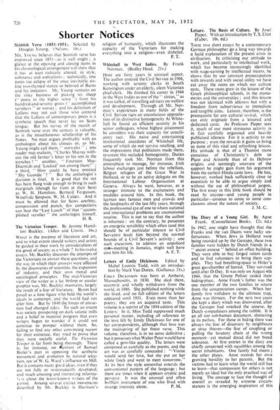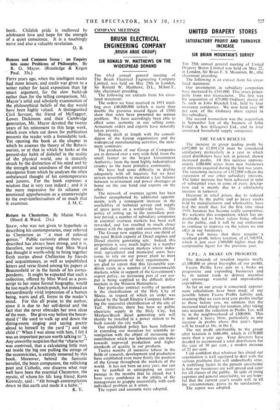IN 1942, one might have thought that the Franks and
the van Daans were lucky un- fortunates. When Jews in Holland were being rounded up by the Gestapo, these two families were hidden by Dutch friends in a " secret annexe " behind an office building. They were able to buy forged ration cards and to find volunteers to bring them sup- plies. They had breathing-space in Hitler's great gas-chamber of hatred. They survived until after D-Day. It was only on August 4th 1944, that the Grune Polizei raided their hiding-place. Anne Frank's father was the one member of the two families to return from the concentration camps. When her family first withdrew to the ultimate trap, Anne was thirteen. For the next two years she kept a diary which was discovered, after the Gestapo had wrecked the annexe, by Dutch sympathisers among the rubble. It is an all too sub-human document, shattering in its pathos. For those in hiding there was always the fear of discovery by neighbours or stray thieves—the fear of coughing or pulling the lavatory chain at the wrong moment—yet mutual dread did not breed tolerance. At first entries in the diary are chiefly concerned with squabbles among the secret inhabitants. One family hid sheets ; the other plates. Anne records her own growing hostility to her parents. - But the victims had to learn what the world still has to learn—that compassion for others is not merely an ideal but the only practical way of living. The courage to face the thought of oneself as revealed by extreme circum- stances is the emerging inspiration of this
book. Childish pride is mellowed by adolescent love and hope for the strength of a quiet conscience. It is a touchingly naive and also a valuable revelation.
0. B.











































 Previous page
Previous page